Learning how to draw can be doubtful, it does not seem easy at start.
That’s ok, it is something new.
However, we have been spoon-fed that when we are good at something, it must be natural to be good at this.
This is why so many will give up without really trying.
Let me show you in 4 steps why Innate Talent is a Myth, an illusion.
Art may be seen as a low priority in school, so most students never grew that talent.
But with the right guidance, anyone can learn to start drawing and excel in design sketching. Innate talent is a myth!
Today, let’s learn how to draw by first overcoming the myth of innate talent!
How to Start Drawing? I Don’t Have any Talent!
Familiar with this?
Unfortunately, even though we feel a passion for sketching,
the myth of innate talent is blocking us from our dream goal as aspiring artists or designers.

We limit ourselves out of fear of failure or ridicule.
Thus we never know if we could, in fact, draw anything we’d like. It’s tragic!
We wonder:
- Can anyone learn to draw? Yes.
- How do I start drawing? By learning how to observe first.
Instead of thinking of people with innate talent,
I rather think of how many potential talents have not awakened yet.
Remember, talent is a skill.
It can be learned and acquired by anyone with passion!
All you need to start is to build confidence in yourself.
The Myth of “Innate Talent”
As tiny kids, we didn’t wonder what to draw for so long. we already had our colored pencils in hand,
and we drew the things we loved: our families, our houses, and the sun….
“Yet, we all begin to draw even before we learn to write.”
We were warmly complimented on our “budding talents”,
even if we still held our pencils pretty awkwardly.
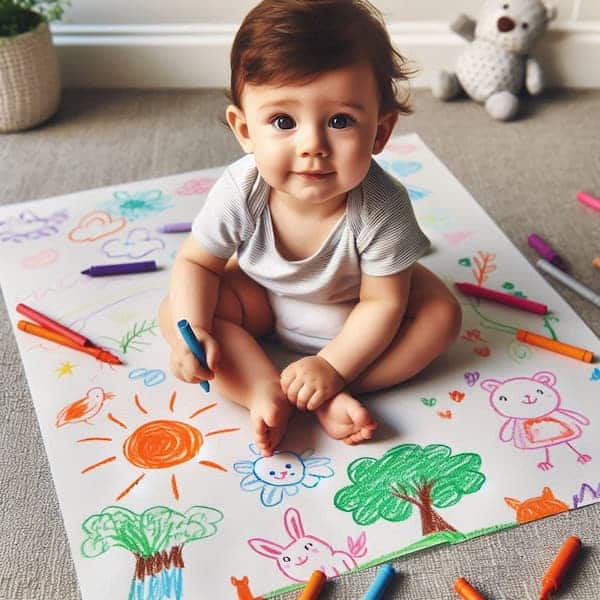
Growing up, we keep asking ourselves
if it is easy to learn how to draw.
But we never start thinking we do not have the talent.
We feel fear to start drawing, so we procrastinate.
In reality, there are always existing talents within us that remain unused.
We can express more things through drawing than through our own words,
especially at that age when we are limited by a child’s vocabulary.
“At school, we learned to write and count, work hard, and learn discipline. How much do we learn about drawing?”
Meanwhile, the “art class” was considered recreational; a hobby, and nothing more.
There, we made beautiful scribbles, and we enjoyed ourselves, but we never truly learned to draw.
School education tends to see art and design as a low priority.
School teaching without creativity
We’re immersed in an education system
where literary and scientific knowledge always comes first,
and where our education has little in the way of creative or artistic goals.*
It is this way of thinking that birthed the myth of “innate talent”.
- I don’t mean to say that literature and the sciences are not creative. On the contrary, they can be treasure troves of creativity!
- Still, we learn to summarize novels and memorize poems.
But actually writing books or poems?
Not much more likely than really being taught to draw.

To begin with we’re mostly left to our own devices.
It is completely normal to lose confidence in yourself.
“Think of the pencil as an extension of your hand.”
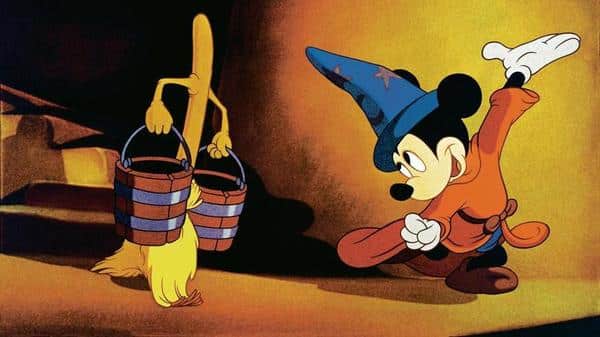
Your brain, your heart are what give life both to your pen and to your creations.
Your skills matter more than the tools.
As a beginner, your fuel to success is your passion.
- We make blunders, we make attempts, and we just don’t know where to begin.
- We copy; we draw without knowing where we’re going.
Lost, we sometimes buy very expensive and high-quality pencils, paper, or drawing tablets. - In these cases, always remember that the pencil is no more than a tool, plain and simple.
- Whether or not it costs you a lot of money won’t change much when you’re just starting out.
- Think of the pencil as an extension of your hand.
- It’s up to you to decide what it does.
STEP 1- Learn to Observe
Your favorite artists may throw together drawings at breakneck speed,
but this is simply thanks to daily training in their capacity for observation and memorization.
Those skills are even more important than learning to master the pencil.

Deconstruct complex objects into lots of small, simple parts.
To do this you don’t need to copy exactly what you see,
but instead, analyze and understand what you’re looking at.
We can observe forms in this way in both 2D and 3D:
instead of the entire object, observe the contours, the light and shadows; the materials, and the textures.
STEP 2- Learn the “Drawing Alphabet”
The letters of the alphabet (A, B, C, etc.) find their artistic equivalents in circles, triangles, squares, and rectangles.
If, as a child, you successfully mastered the careful shaping
of the curves and lines that make up each of the 26 letters of the alphabet,
the much simpler shapes of circles or squares shouldn’t pose much of a problem, should they?
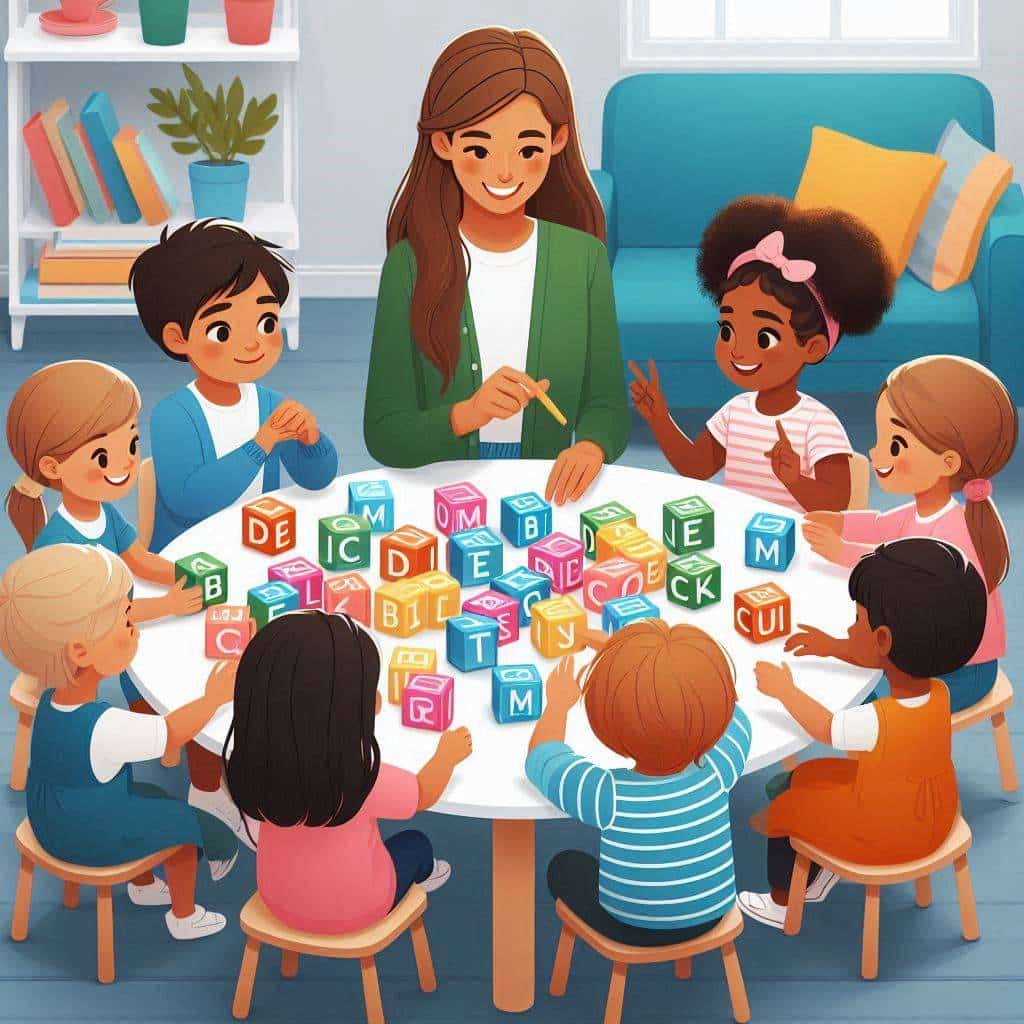
Assembling letters into words is the same as forming new, more complex shapes out of these simple ones. They will come to represent an idea or an object; maybe a person.
What does it look like if you place a triangle on top of a square? A simple house – and I’ll let you fill in the chimney and window for yourself. You see, you already know how to draw.
It’s child’s play!
“Knowledge is nothing without practice. Vice Versa.”
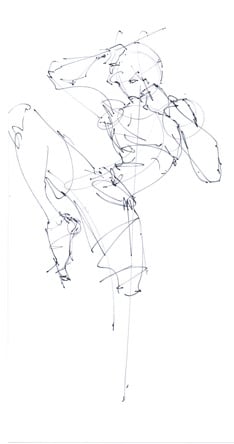 Practice, practice, practice drawing more!
Practice, practice, practice drawing more!
If you sketch daily, your brain and hand will memorize lots of shapes,
from the simple ones to the more complex ones.
You will quickly learn to combine and modify them to create!
20% of the methods will give you 80% of the results.
Most important right now are the essential drawing methods which will help you to improve in leaps and bounds.
These 20% are simple methods that, when put together, allow your drawing to become ever more interesting and/or complex.
STEP 3- Gain Confidence and Speed in Your Drawing
On this blog, you will find some theory, but it will always appear alongside concrete examples that you can immediately put into practice. Expect to be challenged with training exercises of various types and difficulty levels.
The fundamental basics of drawing remain the same for fashion, product design, architecture, animation, and many other fields. It all begins by drawing a straight line freehand.
Firstly I’ll share the standard theories of drawing, then follow that up with sketching exercises designed to sharpen your analytical and observational skills.
And additionally become capable not only of copying what you see but also of creating in your own right.
If you have an unquenchable desire for it,
you will draw anything you want.

The little things make all the difference
Throughout the articles and sketching tutorials on the Design Sketch website, I’ll be giving you basic and advanced tips to help you gain artistic confidence.
Sometimes you may be surprised by the simplicity
of some of these tips and exercises, but don’t underestimate them!
Apply yourself seriously and passionately,
because they’ll have a major role in your future progress and career success as an Industrial Designer.
STEP 4- Get Impassioned

Be passionate about what you do, and you will reach mountaintops!
- You’ll be glued to your chair drawing for hours without noticing the time passes.
- Pocket your pencil and bring it everywhere. It will be your new best friend.
- You’ll draw anywhere; what you find to draw on won’t be important.
- You’ll truly enjoy both learning and having a go at your projects.
- You’ll constantly exceed your limits and expectations.
- You’ll explore new drawing techniques with excitement!
- Discover other domains of art and design such as concept art, fashion design, and shoe design…
What art material do you need?
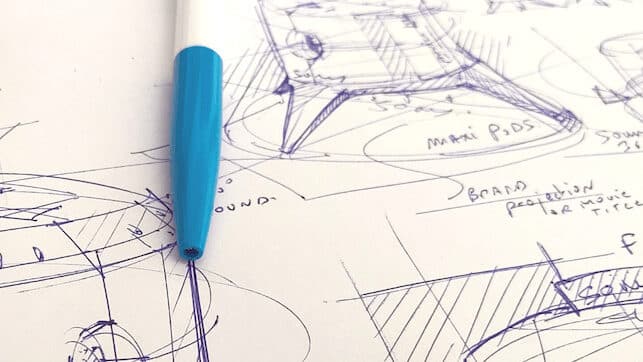
First, let’s see what you don’t need:
I will teach you how to master drawing freehand with confidence and precision.


- 1 ballpoint pen (BIC Cristal is a great pen for sketching)
- 500-page pack of laser paper in either size A4 (or A3)
That’s all!
I made an article on what you should know about drawing with a ballpoint pen, such as the pen blot.
The only rule of the game with me is: Do not erase your mistakes.
Either fix your line somehow or begin again. So don’t be a perfectionist!
With this in mind, you are now in the very best condition
to begin learning design sketching with iteration. So, you can progress faster in drawing with confidence.
> Tell me in the comments below what is blocking you from starting to draw.



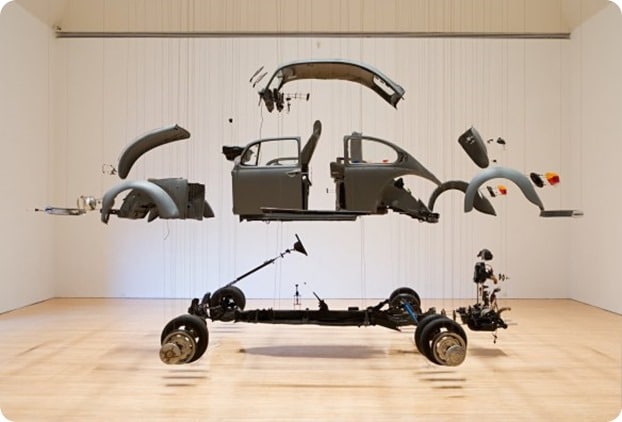

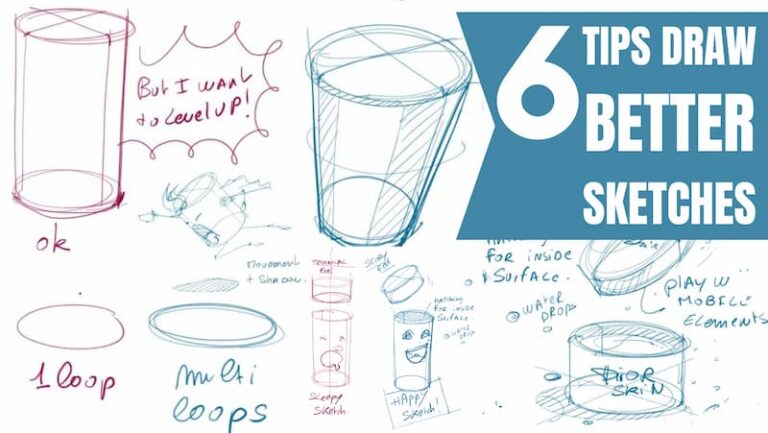
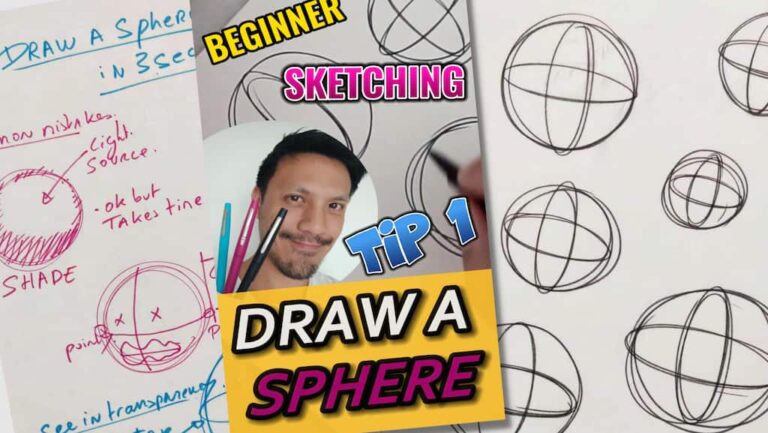


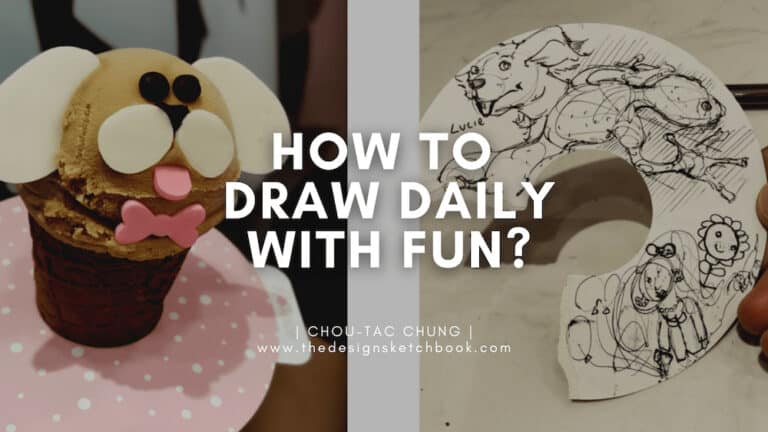




Is the “37 Secrets of Sneaker Designers'” book still available??? I sent for it, got the link to the Dropbox, but the file is deleted. If this site 8s still running and if that book is available I’d love to look through it. I’ve been drawing 20+ years and overtime everyone has to go back to drawing with basics. No matter how good you get, everyone developes bad habits and it’s difficult to remember the basics. This site is great for having those basics set out in a way to follow in steps. Hopefully that link is around somewhere for the secrets of a sneaker designer.
Hi Gino,
Oops! Thanks to you, I realized I forgot to unlock the book delivery.
Let me send you the book in your email. :)
Is the “37 Secrets of Sneaker Designers’” book still available??? I sent for it, got the link to the Dropbox, but the file is deleted.
Thank you, Great method’s; and very professional.
Hi, I’m Usman, I’m so glad I found myself here learning with intelligent guys, I’m a beginner but I’m here to learn to be an expert, thanks a lot.
Hi, still didn’t get the book :( I tried several times already – could you please send it to me, I am really curious!
hi can you send me the starter pack . I still didn’t receive even though I have submitted my email id twice .
please help
Hey!! I have not received the starter book…I tried 3 times!! would you please send it to me?
check them in the promotion area of your mail.I too got this problem.
Thank you Santosh for your response. :)
Yes, sometimes emails like to play Hide and seek.
You may look at your spam folder or promo if you have a Gmail account.
Then, I recommend you to add my email address in your contact list to receive all the guides in good conditions.
Hi Chou-Tac,
I have not received the starter book.I tried 5 times! would you please send it to me?
Best regard
Hello Mat,
I have sent it to you by email. :)
Hello Chou,
I have not receive an email with the book! Please send.
Didn’t receive an email with the book! please send :)
hi i still haven’t received my designer starter pack after registering my email address. can you help please?
Sure Jay,
You can now find it in your mailbox :)
Hey Chou!,
I wanted to ask you what stationery do you use. What is laser paper and what kind of a BIC pen specifically, ball point etc?
Hello Jask,
You have basically 2 types of paper. Inkjet and Laser paper. They are specific to the type of pri ter you use. Laser printer are often use in office. They print fast and cheap. However they need a big investment.
Inkjet printer are cheaper and slow. Anyway, laser paper are smoother, and your pen and palm will slide on it better. Double A is the brand I like. For the Ball point pen brand, the BIC Crystal is nice.
Hi Chou-Tac,
Would you please send me the designer kit ebook,
I didn’t receive it after subscribing,
Thanks,
Noor
I haven’t received my designer starter pack even after signing up ☹️
Hello Fariha, can you send me an email at choutac@thedesignsketchbook.com ? :)
India, want to learn as I want improve visualization and communicate better.
hi i still haven’t received my designer starter pack after registering my email address. can you help please?
Hello David,
Sure please check your email box :)
hello, I registered but have not received the book yet? Can you help me? really thank you.
Hi there, I signed up because I sketch a lot but I’m always looking to learn something new, and improve my skill.
Unfortunatley after signing up I didn’t receive anything in my e-mail.
Hope you can fix that.
Thanx
eager to start but still have not received the book in my email..great stuff though..
Email hasn’t come with starter kit
Hi, Im very interested to learn design sketching. However, i still didnt get my copies even after I sign up. Can you help me?
Thank you for sharing your knowledge to us. And thank you for the book,.
Thank you for sharing your knowledge to us. And thank you for the book,.
Email hasn’t come with starter kit.
same here… didnt get the starter kit inbox
Just sent into your email :)
your website is very useful to students in india who are preparing design school entrance test.
nidceedhelp is online exam guide to people who are preparing for NID, CEED, UCEED and other design school entrance exam in india.
Hi! I tried registering for the ebook a couple of times but haven’t recieved an email! Can you send me a link to the ebook? :)
I got the same Problem !
I have tried to get the book too and am not having any luck! Tried multiple emails too!
Good
Ok
Hello! I am Jayati Dave from India, I am aspiring designer (industrial mainly)!
I just need your suggestion to know and figure out the right way to start my process of improvement towards my ideations and concept sketches as they give life to the new forms and really help.!
Should i follow your videos from the first shoe sketch (youtube) and then proceed accordingly??
or
Should i go random, but this creates a sense of confusion!
Suggest me a better way to begin please.
waiting! :)
Salut,
je me suis inscrit sur le site pour recevoir les ebook car ils ont lait très bien fait, mais je n’ai jamais reçu l’email.
Tu pourrais me les envoyer stp ?
Merci beaucoup pour ton travail.
Hi Chou-Tac,
I did not get the download link for the book. could you please send it to me? i really want to improve my sketching skills. please and thank you!
A.
Hi Chou-Tac, I didn’t get the book in my mail either. Really looking forward to getting it.
Same same, you got it in your email :)
hello,
i am not able to download the book.can you please help.
Hello, you can check your email about the Designer Starter Kit. :)
I’ve been trying to get your ebook, but regardless of many attempts nothing works.
Hello Pesotiger,
I have just answer you on your email :)
I am facing the same issue
awaited for the book though
hello sir,
I’ve been trying to get your book.But the links may not be working.I’ve subscribed your youtube channel too.I truly want to learn your methods & I’m dying for it.So please help me .My e-mail id is vsboss333@gmail.com ….waiting for your reply.
Hi,
I´ve suscribed but I can´t get the book… please help.
thanks
L.
Just sent in your email with the Spanish version as well :)
Hi Chou-Tac Chung. I’ve been trying to get your ebook, but regardless of many attempts nothing works. Please could you help me out. Thanks.
Hello Frankie,
I have just sent an email to you :)
I am starting your blog on now, i really like your thoughts on the “innate talent”.
Hello Mukul,
Welcome at the Design Sketchbook ! :D
Dear Mr Chou,
i want to thank you for the starter kit, it is really helpful.
how can i get better? any tutorials you offer?
Thank you.
Hello David,
My pleasure. I hope the Designer Starter Kit was helpful.
I am actually preparing the launch of my online Design Sketching course. If you want to, I can update you as soon as things get more confirmed. :)
Take care.
Cheers,
Chou-Tac
Hi Chou, Any news from your course please?
Hello Arash,
No news for the moment as the course is still ongoing. I may relaunch it in the next few months. :)
Beside this project, I am planning an extra Design sketching program for 2017. I can update you on this very soon !!
These pieces really set a standard in the industry.
this is a incredible method to learn of course but i have been doing my 4 first sketch and the results had been horrible!! i am a little bit upsed with me… i will do this every day and i hope they will be better… thank you so much for this blog and your time!!!
Keep going Jesus ! :)
Can you please send me also on the email the ebook , it also doesnt work for me. Thnak you
Sent to your email Alina ! :)
THANKS BRO!!! IM GRADUATED ON INDUSTRIAL DESIGN IN BRAZIL AND FOR 5 YEARS IM DRAWINGED ON MY UNIVERSITY. YOUR STEPS IS VERY, VERY BETTER!!! IM CRAZY FOR RECEIVE THE NEXT STEPS!!! OBRIGADO
My pleasure Edson. How things going ? :)
Hi, i just discovered your blog and its awesome! I am an architect but i have always been mediocre in my freehand drawing skills. A few months ago i started to practice almost daily because i really want to improve my skills.
I am particularly interested in product design and cardesign. It is a real challenge because most of them are organic shapes drawn in perspective. Architects usually simplify everything with boxes and just mark overall proportions of masses. When we draw something organic its usually more abstract and conceptual. (see sketches of Frank Gehry for example).
Wish you all the best Constantin.
A tip about organic shape is to try to draw them symmetrical. So your sketch won’t look so abstract and it will be more balance.
sorry for my mistakes)))
Hehe No problem ; )
Chou-Tac, hi! Thank you for the guide 1. There is easy language to study and understanding. Very helpful material. Dounlouding the second)))
Glad you enjoy and that it is helpful Mike ! :)
Very nice starting guide. I loved that not everything was delivered at once but each two days. That kept me intrigued about the next chapter. I loved the way you explained the concepts, very easy, but I miss it already!! I think 4 chapters was to little… I still have more than 3/4 of the paper bought for this… will love to see more!!
thanks
Hello Chou-Tac Chung,
thank you for share it with us. I am a product designer here in Milan and it was great to find out this site. Gonna start with your tips and take it seriously. Hope your method will be easier to help me to improve my drawings. There are so many books but all the time I find them difficult because they don’t explain some basic methods.
Thank you again.
Vasyl
hi i have a question regarding the book umm when i signed up the link was sent but when i download it it stopped at 7mb so incase the link is fixed can you please resent thank you :3
Hello Ayuki,
I answered you by email.
See you !
Hi Chou Tac
I am Krithika. I wish to become an aircraft designer. I hold a bachelors degree in aeronautical engineering. Is it necessary to have industrial design background to become an aircraft designer?
Hello Krithika, (I paste here the answer I have sent to you by mail to share with all).
The domain you are asking for is super niche. And I have no clue about this domain.
What I could share with you is that basically a designer doesn’t have to be an expert into technologies. He designs for people taking care of there social and ergonomics needs. He creates the shapes and will develop the product with a team of engineers according to his specifications. Sometime what the designers want may be difficult to create. So both design and engineer team work hand on hand to discuss to find solutions. eg: Transport designers doesn’t to know much about how to build a motor. In few words, the engineer team “doesn’t create” even if he’s essential for the project to become reality.
Working that way (the designer is the center of the project), avoid to be “slave” of existing technologies. We rather look for what we want, and make our best to make it possible. This is mostly why the world constantly get more innovation. :)
In my opinion, there is chance that studying product design is suitable. But I can’t be firm. The best you can do is simply asking to the company (HR Department or even better if you can get a contact from the Design department) you would like to work for as internship or career in future. I am pretty sure they will glad to answer you. If you are a bit more daring, why not going to there office knock the door and ask to meet for a designer. (I remember when I was intern for a product design company, a young student knocked the door of the agency to ask for info. The senior designers who welcomed him really appreciate his unusual initiative and answered his question on the spot).
A TIP to grab there attention: Instead of saying that you are looking for help and make them feel that they may waste there time, tell them you ask for advice. They will be honoured, as an expert to answer your question.
I hope I could help you more.
Please let me know about your discoveries and your choice.
Cheers,
Chou-Tac
For aircraft Design
Plz contact chahal_vipinkumar@yahoo.co.in
Hi Chou Tac
long time ago we had this discussion!
YES, I, ME am back!
ha ha ha
I heard an interview about Vincent van Gogh… haaa if he could, he would say that Malcom Gladwel is right!
I have to find his story to be able to say the reality of things…
because van Gogh did a lot of drawings in his life, he started because he didn’t know how to draw, so he draw, draw and draw… and vouli voilàààààà
je te trouver le pot cast de cette émission pro te l’envoyer et on en discute…
haaaa j’adore ce thème!
hahha
bye byehasta la vista
renata
Merci Renata. Hasta la vista :)
Hi man, the design kit is amazing :) simple and easy, so after that I look for what I need on this website is that correct? or is there an advanced kit?
Hello Bruce, I am starting creating some Sketching video tutorials for beginners.
Later maybe I could create more kit. Time will tell.
Génial ! Je viens de commencer mon bachelor en Design, et j’ai déjà l’impression de faire des trucs géniaux grâce à ces conseils ! Merci encore ! :D
Ca fait plaisir Loic ! Un bachelor, tu étudies ou ?
J’étudie en Suisse, à la Haute-Ecole ARC à Neuchatel. Je suis dans le cursus Industrial Design Engineering, option Conception ergonomique et Design. Et je trouve ça juste passionant ! :D Et ton blog est vraiment très sympa, je viens voir chaque jour ce que tu as fait de nouveau, c’est super !
hello Mr. Chou-Tac,
i’m unable to get your ebook regardless of many failure attempts. Can you please look in to it and send me the ebook.
Thanking You,
Rohit Pal
Hi Rohit, sure.
Alright I got your email. Please check it out in a minute. :)
Cheers,
Chou-Tac
Fell out of bed feeling down. This has brightened my day!
Merci Renata, ça fait grand plaisir.
Je n’ai pas encore mis en place l’abonnement par mail. Pour le moment, le mieux est de passer par le réseau social qui te convient. Facebook ou Twitter.
A bientôt.
Hello CHou
c’est super comment ton blog est now!
j’aimerais m’abonner, mais where??
Yes Chou-Tac, it’s in spanish for my latin america readers & friends!
I see you like also the 20/80 and you apply it very well!
have a nice evening!
PS/ Here in Bretagne is very sunny,
Thank you for sharing your article Renata. I started to read in Spanish, but lucky I saw the french translation below. Smoother for me. :)
I agree with THE MYTH OF “INNATE TALENT”
I wrote about this in my article: http://lesimages2renata.com/
But you wrote it very nicely!